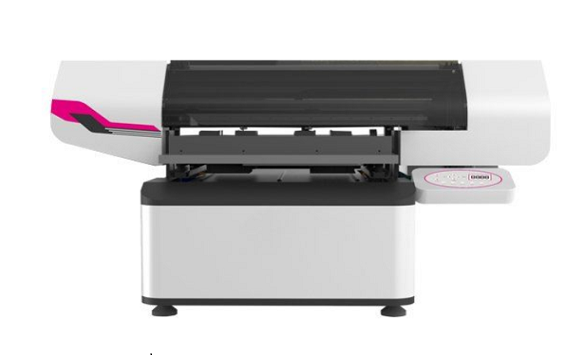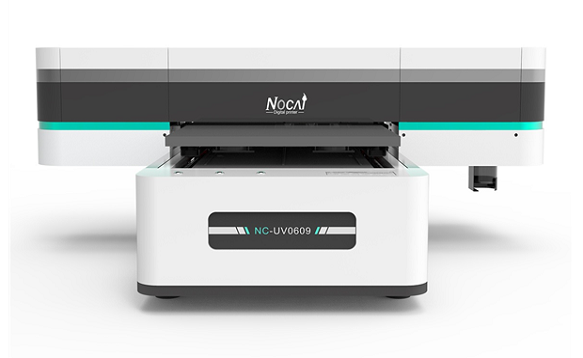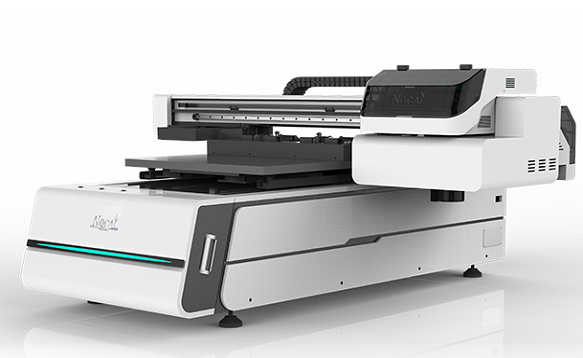
Why Does UV Printer Print Out Like Stripes ?
- By:nocai uv printer
- 2018-11-06
- 760
Why My Printer Is Printing Stripes
Desktop uv inkjet printers contain complex permanent moving parts and consumable components designed for periodic replacement. When your desktop printer creates output that shows a pattern of scratches on or along the pages, you’re wasting paper and supplies until you diagnose the problem. Which direction you go to troubleshoot depends on the type of output fault you are seeing and the type of desktop uv inkjet printers you are using.
UV Inkjet Flatbed Printer
Inkjet printers work by heating tiny nozzles or applying an electric current to them to change their shape, forcing the ink onto the page. When you see a gap in the output or a horizontal line across it, your printhead may have clogged nozzles. Desktop uv inkjet printers have a low tolerance for downtime, and your inkjet printer may require multiple printhead cleaning cycles to penetrate dry ink. If a defect in the output disrupts the appearance of vertical lines in the page content, your printheads may need to be realigned. Both cleaning and recalibration consume some of the installed ink, especially if your device requires deep cleaning or multiple adjustment cycles.
Laser Toner or Toner Cartridge
UV laser printer creates an entire page of content at once by transferring toner from a rotating drum onto the paper and using a heater to melt the toner. Toner cartridges are part of the toner cartridge or are installed as separate consumables. In either case, scratches on its photosensitive surface can cause streaks or lines on the output. Most ink cartridges contain a spring-loaded shutter that opens when you insert supplies into the printer. If you remove the cartridge and gently open the shutter (being careful not to touch the cartridge or anything else inside the cartridge), you may see scratches on the surface. To eliminate your supplies as the source of the problem, replace the ink cartridges and reprint the document page.
Laser Melting Unit
The toner is made from a mixture of crushed plastic and dyes. To bond it to the paper, uv laser printers use a heating element called the fuser unit, which melts the toner as the paper passes through the rollers of the fuser unit. If the toner sticks to the fuser or its roller is damaged, unexpected vertical lines may appear on the output. To diagnose lines that form a repeating pattern, you can find the repeating defect rule published by the printer manufacturer for your hardware model. This document identifies the origin of marks on the page by their position relative to the position of the rollers and other components of the printing mechanism. Some uv laser printer manufacturers provide these service guides only to technicians.

Dirty Printer
Unbound toner that gets inside a laser flatbed printer ends up on its rollers or other moving parts and transfers to your output as streaks, tracks, or lines. A number of roller marks form a unique “tire mark” pattern along each sheet of paper in the direction the sheet passes through the printer. Addressing these flaws requires a two-part approach. Finding the source of lost toner can lead to leaking ink cartridges that can gradually stain your machine, or a one-time mishap due to trying to reprint pages from another machine with a fusing temperature below the one for which the printer is used. Equipment cleaning may require a service call, depending on your level of experience and the design of the laser uv printer .
No one is immune. When your inkjet printer uv head decides to clog or cartridges are like ink witches from the land of scratches, scratches and smudges, there’s no vaccine or pill to take. Even something as simple as a paper jam or an unplugged printer can cause serious headaches and the urge to throw the printer across the room. Learn how to fix desktop uv inkjet printers ink smears and other common printing issues and errors to save paper, ink, and your sanity !
As one of the uv inkjet printer suppliers in market, we want to say the best way to keep your ink cartridges, printer ink, and all other parts of your uv inkjet flatbed printer running smoothly is to learn how to troubleshoot, so you can identify common issues that plague printers. inkjet enthusiasts. With a little patience and knowledge, you can fix almost anything without buying a new printer. Most HP, Canon, Brother, and other inkjet flatbed printers have the same problem, and almost all problems are easy to identify and correct. Here are the common faults that sometimes cause streaks and streaks and some helpful troubleshooting tips to fix them.

Unexpected ink streaks, color streaks, and unwanted lines fill the printed page. Additional streaks and lines may mean that the printheads are misaligned. There is an alignment tool in the printer control panel. If this is not the problem, maybe the inkjet flatbed printers are dirty. Printer ink smears can appear on the edges of the paper, which means that there is ink on the rollers and other parts. Follow basic cleaning instructions or use a lint-free cloth to wipe the rollers and other contaminated parts.
The uv inkjet label printer prints “garbled characters”. If your printer pages and pages contain strange symbols, characters, or formatting, the inkjet driver may be outdated, corrupt, or incompatible with your operating system. A common solution to “garbled” printing is to reinstall the printer driver. Colors are missing or appear to be distorted in the print. If color is a problem, you may need to use the printer’s printhead cleaning tool. If that doesn’t work, replace the ink cartridge. If this does not resolve the color issue, the printhead may be faulty, which means the printer needs to be repaired or replaced.
Stripes Problem Analysis of UV Flatbed Printer Printing
Cause 1: The nozzle is disconnected.
Solution: The plugging of the nozzle will cause the nozzle to be disconnected, so that the amount of water sprayed on a certain color device is insufficient during the printing process, which is manifested as burrs and blurred lines. Carefully check the status of the nozzles of desktop uv inkjet printers, which can be checked by printing a test strip. If it is found that there is blockage, the lines are not clear, and the lines are intermittent, it is necessary to clean the inside of the nozzle with cleaning fluid. There are many reasons for the blockage of the nozzle. Customers and friends can clean the nozzle 1-2 times. If it is serious, you need to use alcohol After soaking for 24 hours, clean it again to eliminate hidden dangers.
Cause 2: The distance between the nozzle and the medium is too high.
It may be that the distance between the print head and the surface of the medium is too high, so that the ink droplets cannot be ejected on the surface of the medium in a straight line, resulting in the phenomenon of ink spray. Of course, the printed image will have random spots, burrs, ghosting and other phenomena. Usually, when the nozzle is more than 8cm away from the printing material, the phenomenon of floating eggs will occur, so when printing, please check the height, if it exceeds, you need to lower it.

Cause 3: The voltage of the print head is too high.
It may be caused by the high voltage. The uv flatbed printer uses nozzle, which has strict requirements on the working voltage. If the voltage is unstable or the voltage is too high, the equipment will not be able to operate normally. Check the voltage indicated by the indicator light, whether the red light is on, and alarm. If it is found that there are circuits of other accessories on the voltage board of the printhead, it means that it is a modified uv inkjet flatbed printer. If the conditions are limited, please equip the voltage stabilizer at the corresponding point to ensure a suitable voltage environment for the equipment.
Cause 4: Problems in electronic control system.
There is also a rare case of the problem of the electronic control system of the UV flat panel. The electronic control system controls the pulse ignition spacing is unreasonable. During the operation of the equipment, the co-impulse interferes with the flight trajectory of the black droplets, resulting in unimaginable effects on all sides. The pulse interval of the electronic control system to control the ignition of the nozzle is not reasonable. There are two reasons for pattern cross color in UV flatbed printers,It is the oblique spray of the nozzle, and the second is a problem with the circuit board.
First, let’s talk about the solution to the oblique spray of the nozzle. The oblique spray of the nozzle may be blocked internally. It is necessary to clean the inside of the nozzle to ensure the smooth flow of the internal channel. If the nozzle is still oblique spray blocked after cleaning, it is necessary to consider replacing the nozzle. At present, most of the nozzles used in UV flatbed printers on the market are the fifth-generation oil-type nozzles, non-water-based nozzles and other nozzles. When replacing nozzles, it is best to buy from the original manufacturer, because their nozzles are the most suitable for printers. Original imported.
The second is the problem of the circuit board. Because the phenomenon of oblique jetting on the circuit board is mainly concentrated on the modified universal uv inkjet flatbed printer, the self-developed flatbed printer is not common. Since the modified printer is the circuit board card of the real machine, printer and other equipment, in order to realize the UV printing process, the manufacturer will add a lot of external things on the original circuit board card, causing the UV thousand-board machine to be extremely unstable, resulting in The problem is strange. In this case, it is recommended that the application should directly find the original manufacturer to solve it.
Stripes In The UV Digital Printing Machine
For a long time, many customers in the process of using uv digital printing machine may cause a lot of stripes in the effect printed by UV flatbed printer due to the error of operation, what’s the reason? In that case, many customers will be at a loss, can only wait for after-sales staff to check and repair. As a digital flatbed printer manufacturers, Nocai has dealt with a lot of problems in this area, and we are all brainstorming. Here are a few methods for you to learn and refer to.
First we need to find out the reason:
1. Check whether the test strip has broken needle, floating ink or oblique spray phenomenon. First use the printhead failure test program to check which needle is defective. Then remove the ribbon cartridge, open the printhead locking clip and pinch the printhead fins (i.e. housing) on both sides. Lift the printhead to see With two flexible flat cables attached, the printhead can be removed by pulling the cable. Wipe the ink in front of the printhead with an alcohol swab to see if a needle of the metal uv printeris missing.
If it is a broken needle, you need to change the needle. Generally, if the digital inkjet printer price is expensive, its needle will adopt relative good quality needle in this machine. Therefore, if you have to replace the needle on your own, we suggest you should turn to the inkjet printer manufacturer first, and prepare the tool when replacing the needle, there are tweezers, blades, diamond files, steel rulers, sharpening stones and special printhead accessories with a special device for removing the heat sink, you can see several layers of structure.



Speak Your Mind